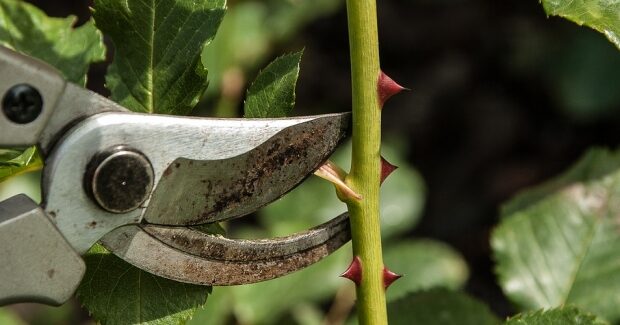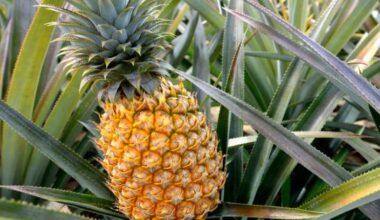All plants will grow back after cutting, as long as you cut them in the right place and at the right time!
For an optimal culture, it is important to prune and harvest your plants: This “cleaning” favours their regrowth and multiplies their production. To begin with, you should know that all plants compete for access to light. Thus, pruning the plants that provide shade to the others on the sides allows the hidden leaves or buds to blossom and grow by accessing light in turn.
Moreover, when you remove leaves or fruits, it leaves more room and more sap for others to develop and ripen in their turn. It is therefore important to harvest without delay as soon as your fruits and vegetables are ripe and to prune your plants regularly by removing dead or yellowed leaves. These cuts encourage the production of new branches and delay the flowering of aromatic herbs, which alters their flavour. The objective is to obtain a productive plant for as long as possible.
Contents
Why is cutting plants important?
There are several reasons why gardeners prune their plants. This eliminates dead branches and thus the spread of disease. The purpose of pruning is to aerate the silhouette, in order to bring light to the heart of the plant. We prune fruit trees to boost their fruiting and flowering plants to prolong the flowering period. Very often, pruning is done to guide the growth of plants, such as a hedge for example.
When to prune your plant according to its species
Hedge plants
For the plants of persistent or resinous hedges, without interest of bloom, to prefer a size during the months in A such as April and/or August.
Roses
- In autumn: a mid-height pruning to even out the massif.
- In spring: prune short, aerate the center of the plant by pruning flush and leave only a few vigorous branches of the same size, towards the outside.
- In the course of bloom: to remove the faded flowers.
Shrubs
We advise you to practice most of your pruning work during the month of March. Indeed, shrubs with summer or autumn flowering will have to be pruned in March or April. They flower on the wood pushed in spring and summer of the same year. However, shrubs flowering in the spring should be pruned as soon as they finish flowering.
Conifers
They are cut in the month of April and in the month of August in the beginning of sap.
Fruit trees
For pome fruit trees, prefer March for formation pruning and June for fruiting pruning. Stone fruit trees will prefer to be pruned at the beginning of leafing.
Stem trees
They carve in March, taking advantage of this time to remove the old wood.
Perennial plants
In the case of the persistent plants of the type Hélianthème, Iberis, Bergenia, prune the flowers faded after bloom. In the case of rhizomatous plants of the type Iris, Hémerocalle, prune the flowers at the end of flowering and wait until the foliage dries up to remove it in its turn. In the other cases, cut the plants down to the ground after flowering or at the beginning of winter.
What tools should be used for pruning plants?
It all depends on the diameter of the branch to be cut. For smaller branches, a pruning shears will do the job. Otherwise, you can arm yourself with a saw or even a chainsaw. Hedges require the use of a shears or hedge trimmer instead. You can also equip yourself with a serpe, especially for pruning vines.
The main principles of plant pruning (cutting)
If each plant will require a particular size, there are some general rules:
- Remove dead and diseased branches
- Cut off intersecting twigs
- Cut over one eye (future bud)
- Alternating buds: cut above a bud facing outward because it is in this direction that the next shoot will grow.
- Roses: cut above the 3rd or 5th eye from the base, choose an outward-facing eye (all you need to know about rose pruning)
- Cut at an angle so that the water does not stagnate.
How to prune your plant?
The most important cuts on the house’s potted plants are made in early spring. The operation aims to maintain the plant well compacted, to favour the branching or to limit a too imposing development. The plant does not suffer, on the contrary.
It reacts positively by growing more vigorously. Use scissors for the herbaceous parts and secateurs for all woody branches. Both tools will be clean and sharp: disinfect the blades with alcohol after use. Similarly, always prune 5 mm above a bud, a leaf or a young branch, facing outwards. As the plant grows, the center of the plant will remain more airy.
Summary
To prune a plant, it is to cut some parts of it for :
- give it the desired shape or size (e.g. form a well-rounded bush, limit the size of fast-growing plants, etc.),
- keep it in good health,
- and stimulate its flowering or its fructification.
For the first and second year, practice a balance pruning (prune the few branches a bit long). The third year and the following years to rejuvenate the plant or to limit it in its exuberance or to control it at a certain height, remove 1/3 of the branches of the plant by removing the oldest branches or those badly formed. Prune as close as possible to the base of the plant and then reduce the length of the remaining branches.









